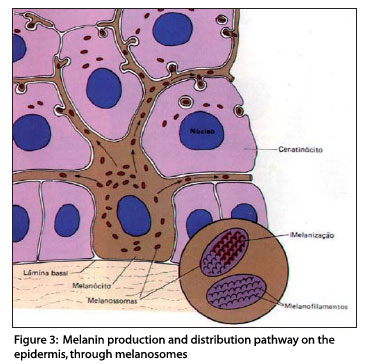Melasma is a common dermatosis that involves changes in normal skin pigmentation, resulting from the hyperactivity of epidermal melanocytes. The consequent hyperpigmentation is mostly induced by ultraviolet radiation. Clinically, melasma is characterized by light to dark brown macules that usually occur on the face, although they can also affect the cervical and anterior thoracic regions and upper members.Fertile age women and those with intermediate skin phototypes are most likely to develop melasma. Most of its physiopathogenics is not yet fully understood, but there is a relation with genetic and hormonal factors, drugs and cosmetics use, endocrinopathies and sun exposure. The authors discuss the main aspects associated with skin pigmentation and the development of melasma.
Melanosis; Pigmentation disorders; Skin pigmentation; Ultraviolet rays








